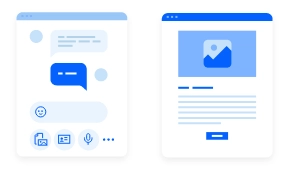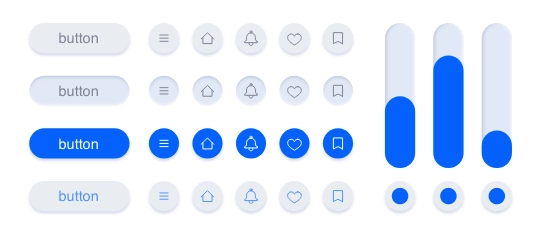What is a Native Mobile App Developer?
A native mobile app developer is a professional who is responsible for creating apps for mobile devices such as smartphones and tablets. These apps run directly on the device and are known as native apps.
Why Become a Native Mobile App Developer?
There are several reasons why it may be interesting to become a native mobile app developer:
It is a growing profession: the use of mobile devices is constantly increasing, which means there will be a constant demand for native mobile app developers.
You can work anywhere in the world: many companies hire native mobile app developers remotely, which means you can work from anywhere in the world with an Internet connection.
You can work on interesting projects: mobile apps are used in a wide variety of fields so you can work on very interesting and constantly evolving projects.
What Do You Need to Become a Native Mobile App Developer?
Although there is no specific education required to become a native mobile app developer, it is advisable to have knowledge in the following areas:
- Programming: knowledge in a programming language is necessary, such as Java or Kotlin for Android or Swift for iOS. While it is not necessary to be an expert in programming, it is important to have a solid foundation to create mobile apps.

- User interface design (UI): it is important to know how to design an attractive and user-friendly interface for the end user. This includes knowledge in graphic design and how the user interface adapts to different screen sizes.
- User experience design (UX): it is important to know how to create an app that is easy to use and enjoyable for the end user. User experience design includes user research, prototyping, and testing the design to ensure the app is intuitive and easy to use. Knowledge in user experience design will help you create successful apps that users want to use.

- Knowledge of the mobile device's operating system: it is important to understand how the mobile device's operating system works that you are developing the app for, as this will help you optimize app performance and make the most of the system's features.
- Knowledge of databases and data storage: it is important to understand how to store data and access it in a mobile app. This includes knowledge of SQL and NoSQL databases and how to use them in a mobile app.
- Security and privacy knowledge: it is important to consider user security and privacy when developing a mobile application. You must ensure that user data is protected and that the app complies with all relevant privacy laws and regulations.
How to Become a Native Mobile App Developer?
There are several ways in which you can become a native mobile app developer:

- Learn on your own: there are many online resources that can help you learn how to develop mobile apps. You can find tutorials and online courses that will teach you how to program in Java or Kotlin for Android or Swift for iOS, as well as design user interfaces and user experiences.
- Attend a computer school: many schools offer mobile app development training programs that will teach you everything you need to know to become a native mobile app developer. These programs often include practical classes and projects where you can put what you have learned into practice.
- Obtain certification: there are many certifications available that can help you demonstrate your knowledge in mobile app development. Some of the most popular certifications include the Google Android Developer and Apple iOS Developer certifications.
- Work on personal projects: an effective way to demonstrate your skills as a mobile app developer is by working on personal projects. You can create an app for Android or iOS and publish it in the corresponding app store. This will help you demonstrate your skills and gain experience in mobile app development.
- Work for a mobile app development company: another way to become a native mobile app developer is to work for a mobile app development company. This will allow you to gain experience in mobile app development and learn from other professionals in the field.
- Join a developer community: there are many online communities and groups of mobile app developers that you can join. These communities will allow you to interact with other developers and learn from them, as well as participate in projects and events related to mobile app development.
In conclusion, becoming a native mobile app developer is an interesting option for those interested in programming and mobile app development. Although there is no specific training required, it is important to have knowledge in programming, user interface design and user experience, as well as in the mobile device's operating system and security and privacy. There are several ways to become a native mobile app developer, such as learning on your own, attending a computer school, obtaining certification, working on personal projects or working for a mobile app development company. Additionally, joining a developer community can also be helpful in learning from others and staying up to date with industry trends. To succeed as a native mobile app developer, it is important to stay up to date with the latest technologies and be open to learning new skills.
What is MCSS and how can it help you build faster and better native mobile applications?
Mobile app development for mobile devices is essential for businesses today. Every day, billions of people around the world use an average of eight apps on their smartphones.

If you are looking for a cost-effective way to still offer the best user experience and performance to end users when building mobile apps for Android or iOS, the MCSS framework is the only option for you. With MCSS, you can reduce the time and costs of developing a native app for mobile devices by over 40% and still maintain the same structure, appearance, and performance on Android and iOS.
Globally, the most used mobile operating systems are Android and iOS. Android apps are developed in the programming language Java while iOS apps are developed in Swift. When developing an app, it is difficult for developers to write code in two different languages, making it a costly process. MCSS is the only native framework that helps reduce the time and cost of building a native app by allowing you to work with both languages simultaneously.
How does it work?
MCSS, which stands for Mobile Cascade Style Sheet, is a framework developed simultaneously in Swift and Java so that developers can apply style sheets to native iOS and Android apps without having to modify the structure, design, or aesthetics.
This framework clearly shows which native mobile components are on Android and iOS devices. By using classes and IDs, you can set the appearance for components in a native app and create complex graphics in the same way you would in CSS, on both operating systems (Android and iOS) simultaneously. By using selectors with simple MCSS instruction lines, you can conveniently modify the style of components or groups of components within an app.
It is definitely a tool that can significantly reduce the work done by developers, as it allows for control of multiple aspects such as design and aesthetics of multiple types of views simultaneously on Android and iOS. Its style sheets can be stored locally in the native project or a URL can be referenced, allowing for real-time changes and updates to the app's views, allowing for aesthetic updates to the apps without having to send them to the app stores. In addition, MCSS can be run on any native IDE such as Xcode, Android Studio, Eclipse, and more.
Benefits of MCSS
MCSS has many features and benefits that make it the only alternative for developers to build their projects more comfortably and in less time, offering the best user experience and reliability that a native application can have. Some of the main benefits of MCSS are:
- Increase the efficiency of native application development As mentioned at the beginning of the article, the use of MCSS can reduce the time and costs of developing a native application by almost half, as it works simultaneously with Android and iOS.
- You can create complex designs without the need for additional code. The style sheet is a very useful tool for any developer, as it will allow you to create design features, simultaneously and without limits. All of this without having to spend hours programming or making a large number of lines of code.
- Easy to maintain A common problem faced by application developers is to make changes to one or more views of an application in production. This becomes less of a problem due to the fact that the MCSS style sheet is updated simultaneously and in real time in Android and iOS.
- No learning curve No matter how intelligent a person is, it is always difficult to learn new things, especially programming languages. Fortunately for application developers, MCSS shares more than 70% of the instructions of traditional CSS, which means that any programmer with knowledge of CSS can easily adapt to working with MCSS.
- Can MCSS completely replace native programming?
Although MCSS is a very useful tool for the development of native mobile applications, it cannot completely replace native programming. It is important to have programming knowledge in the corresponding native language (Java for Android and iOS for iOS) in order to implement platform-specific functionality and business logic. However, MCSS can help you significantly reduce the amount of code you have to write and allow you to focus on implementing functionality rather than design and aesthetics.
In summary, MCSS is a very useful tool for any native mobile application developer looking to reduce the time and costs of development and still offer the best user experience and performance to end users. If you are interested in becoming a native mobile application developer, consider using MCSS to accelerate your learning process and improve your skills in mobile application development.

